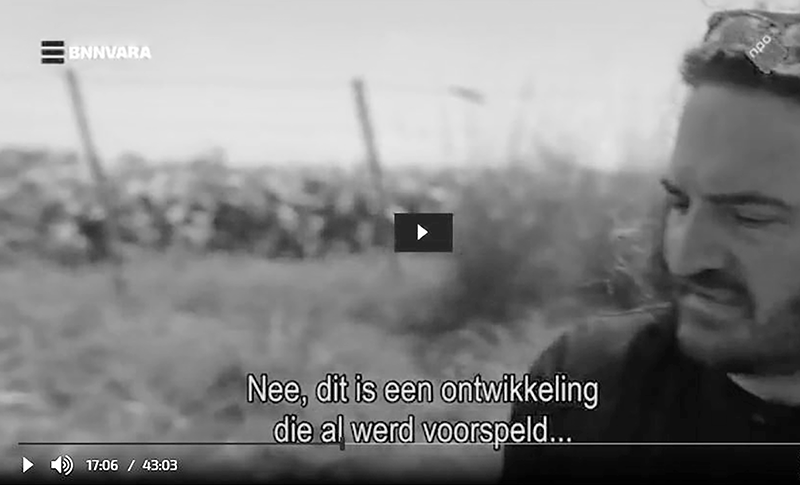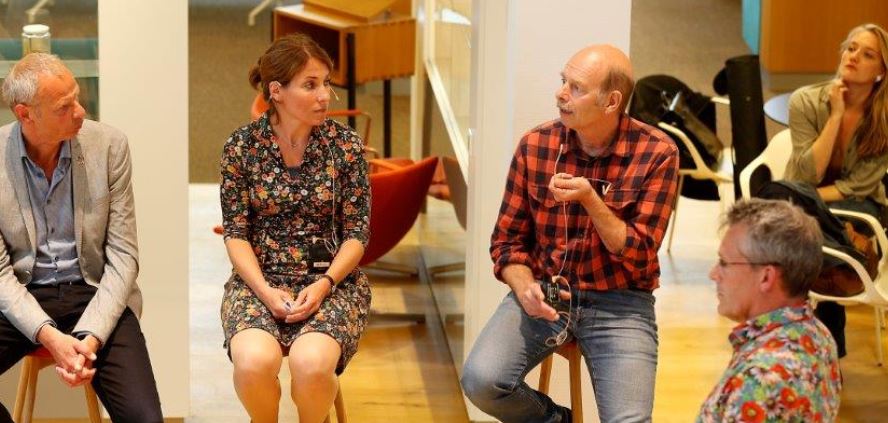Wageningen scientists have been lobbying misleadingly for food that’s been genetically modified with CRISPR-Cas, the Dutch TV programme Zembla claimed recently. Young Wageningen scientists met to discuss what was said on Zembla, and CRISPR-Cas technology in general.
Cutting and pasting in the DNA of plants with CRISPR-Cas technology is a development that scientists, politicians and the general public all have something to say about. And they certainly differ – even the scientists’ views clash. At the instigation of Wageningen Dialogues, some 50 young scientists from Wageningen met in Impulse at the end of April to discuss CRISPR-Cas. Resource was there and has drawn up a list of the key points made.
1. Don’t tar CRISPR-Cas and GMO with the same brush
Zembla’s documentary shows the negative effects of genetic modification on crops, yields and soils in South America, where it has been used in agriculture since the 1990s. Some of the dialogue participants felt that the documentary did not differentiate sufficiently between GMO and CRISPR-Cas.
You can compare it to an internal combustion engine, which powers life-saving ambulances as well as destructive tanks
One of them commented: ‘I missed any explanation of the difference between transgenesis and cisgenesis.’ In transgenesis, scientists add a piece of DNA from another organism, while cisgenesis entails making small modifications to an organism’s own DNA. ‘The documentary shows the consequences of prolonged use of transgenic crops in Argentina, whereas CRISPR-Cas’s strong point is that it can make small modifications to a crop’s own DNA.’
2. Scientists are human and therefore never objective
Another subject of discussion was the accusation that Wageningen scientists are too positive about CRISPR-Cas and are lobbying for the technology. One participant noted that scientists seem to be expected to be neutral. ‘But scientists are only human and they do have their own political convictions and opinions’. Those participants who work with CRISPR-Cas themselves admitted their enthusiasm for the technology. ‘Since you sincerely believe it to be a useful technique, it is almost impossible to be truly objective,’ said one of the researchers. Others thought they were blinded by their enthusiasm, though. And saw that as a reason why it is important to keep on talking to critics and exposing all the pros and cons whenever researchers speak on behalf of the scientific world.
3. Spreek over CRISPR-Cas als technologie, niet als oplossing
Various things go wrong when people talk about CRISPR-Cas, suggested some of the young researchers. For instance, urgency and climate change are put forward as reasons for using CRISPR-Cas. ‘With that negative starting point, we paint a picture of a world that’s going to the dogs, and needs saving with this technology.’ Several of the participants criticized the way some people present CRISPR-Cas as a solution. ‘Scientists, politicians and the public should see CRISPR-Cas as a technology, a tool,’ said one researcher. ‘Like any other technology, it can produce good and not-so-good results. You can compare it to an internal combustion engine, which powers life-saving ambulances as well as destructive tanks’. According to some, that is precisely the issue. Because the opponents of CRISPR-Cas are not wary of the technology itself, but of how it might be used. ‘So we must make sure the public are well-informed about the technology’s potential and its limitations.’
4. Don’t underestimate the general public
One of the young researchers in Impulse used to be a fierce opponent of GMO. ‘It was only when I learned how genetic modification works and what it can achieve that I changed my mind.’ So keeping society well informed is crucial. ‘But how do you explain something as complex as CRISPR-Cas clearly?’ one person wondered.
Scientists are only human and they do have their own political convictions and opinions
Other researchers pointed out that it is a risky misconception to assume that the public doesn’t understand GMOs. ‘This not only underestimates society, but also distracts us from what really matters. Which is to start a conversation with the lay public on how we should use the technology, what it means for different groups of people, and who stands to benefit from it.’
5. Make science more tangible and visible
The discussion also threw up the million-dollar question: what is the role of scientists in relation to society? One of the researchers sees this role as that of a guide or a parent. ‘You need to be empathetic and in touch. Although it’s okay to correct people if they’ve got their facts wrong, your job is to help them cut their own path through this, and not to push them in a certain direction.’ Other participants felt that science and scientists should be more visible to society. ‘Make science more tangible by organizing an open day,’ suggested one researcher. ‘Open up Orion or one of the laboratories and invite people for a guided tour. Have a chat with them over coffee and cake.’ One participant drew attention to the option of joining the Science Communication Interest Group for young scientists. The group meets monthly and lays on these kinds of events.
Follow-up
The dialogue will continue in June, when it will delve deeper into the role of scientists, as well as the question of how intellectual property affects the development of techniques such as CRISPR-Cas.

 Photo: a still from the Zembla programme
Photo: a still from the Zembla programme 

